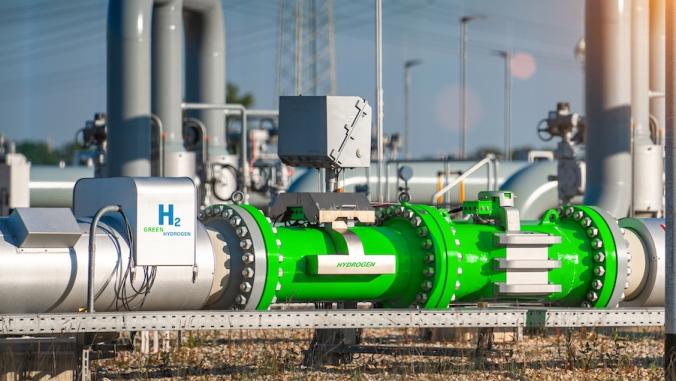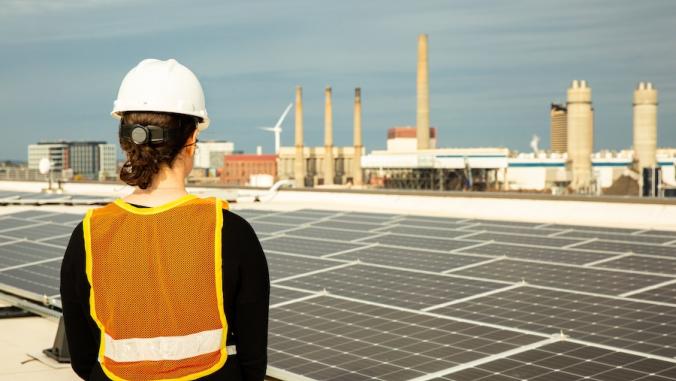Green hydrogen is on everyone's lips right now. It seems there’s a perfect storm of government incentives, technological advancements and hope converging to hype the fuel source to new levels.
Here’s a handful of headlines that have passed my desk in the past week:
- The Department of Energy announced the availability of $750 million for research, development and demonstration to reduce the cost of clean hydrogen, the first half of the funds dedicated to this effort through the Inflation Reduction Act (IRA).
- April 7 (Friday) is the deadline for applications for companies to become part of the Regional Clean Hydrogen Hubs program, another DOE initiative aimed at supporting energy storage and transport technologies.
- New applications are taking shape, from a 64-foot hydrogen electric yacht in Europe to a hydrogen fuel cell plane taking a test flight.
- New offtake agreements for green hydrogen are emerging, including one with Stelco to decarbonize steelmaking, and another involving Fusion Fuel, which signed a 10-year offtake agreement with Hydrogen Ventures in Europe to blend hydrogen in its natural gas pipeline.
- The Canadian government announced a Clean Hydrogen Investment Tax Credit last week, which comes after the IRA offered some of the most significant incentives for hydrogen in the U.S.
I get what the fuss is about. Green hydrogen sounds amazing. It’s produced using an electrochemical process that draws on clean energy to split water into hydrogen and oxygen — meaning we could make fuel by mashing together water and sunlight or wind (or other renewable energy sources). That fuel could be the solution we need to decarbonize some of our toughest decarbonization challenges. It could (theoretically) help reduce emissions for air travel and cargo ships. It could (theoretically) be used to make electricity, providing seasonal energy storage to decarbonize the grid. It could (theoretically) help cut emissions from steel and heavy industry.
With such a long list of seductive promises, it’s no wonder consumption projections for green hydrogen are growing. According to Capgemini Research Institute, 63 percent of heavy industry companies are looking at low-carbon hydrogen to replace carbon-intensive systems as part of decarbonization goals. McKinsey predicts demand for clean hydrogen could reach 660 million metric tons by 2050, up from about 6.5 million in 2020.
Today, "clean" hydrogen technically refers to hydrogen that is less emissions-intensive than its conventional counterpart. That could include hydrogen made from fossil fuels with carbon capture or electrolysis tied to the grid that uses electricity from varying sources. "Green" hydrogen, on the other hand, refers to hydrogen made entirely from clean energy.
All this buzz is exciting, but it also betrays how far we are from scaling solutions.
In reality, green hydrogen makes up just a fraction of our global hydrogen supply. According to the International Renewable Energy Agency (IRENA), in 2021 about 47 percent of the global hydrogen production came from natural gas, 27 percent from coal, 22 percent from oil (as a by-product) and only around 4 percent came from electrolysis. IRENA estimates that only about 1 percent of global hydrogen output is produced with renewable energy. These processes produce about 75 million tons of hydrogen per year, primarily used for ammonia production and petroleum refining.
In this zenith of the green hydrogen hype cycle, there are many challenges to work out. Here are few issues that must be addressed to scale hydrogen meaningfully:
Develop standards to verify clean hydrogen is clean
Today, the price of green hydrogen comes at a premium, costing around 2-4 times more than conventional gray hydrogen (the name given to hydrogen made from fossil fuels). The early offtakers will be those that care about its carbon intensity. That means it’s essential to ensure the product is, in fact, clean.
The process of tracking carbon intensity, sometimes called guarantees of origin, would entail schemes to label hydrogen with the carbon emissions generated by its entire life cycle — from production to transportation. This is no small feat, requiring thousands of digital certificates to track the fuel of every step of the journey.
There are early whispers that this is beginning to happen. In October, HyXchange launched what it calls the first hydrogen certificate standard in Europe. Today, it’s only operating in the Netherlands.
Such certificates could help sidestep semantic distractions on the road to decarbonization.
Whatever process is adopted must be recognized internationally, as the dream is clean hydrogen can be used for international transportation and for manufacturing internationally. That would ensure hydrogen cargo ships could move between countries and American companies would know the emissions intensity of steel made with hydrogen in Asia, for example.
Attract additional capital
While the hundreds of millions of dollars promised by the U.S. government to spur forward green hydrogen will help and private capital has been flowing into the space, there is still a significant funding gap.
McKinsey estimated that the green hydrogen value chain will require almost a half trillion dollars to scale, including production (which has an investment gap of $150 billion), transmission, distribution and storage (which has a gap of $165 billion), and end-use applications (which has a gap of $145 billion).

To be fair, this analysis was published in May — two months before the passage of the IRA, which was packed with green hydrogen perks. Still, the benefits within the legislation don’t bridge the gap.
Establish offtaker agreements
As more clean hydrogen becomes available, companies will be interested in more contract models to enter long-term offtake agreements. This can help new hydrogen projects be built and ensure a purchaser has a strategy to meet decarbonization goals.
Today, there are very few examples of what this may look like. Last year, the phrase "hydrogen diplomacy" arose as the European Union sought more fuel sources amid its energy crisis. But for all the bluster, only four contracts have actually been signed, according to Bloomberg NEF.
This relatively small number reflects how new the green hydrogen sector is. Many details must still be worked out before green hydrogen offtake deals are commonplace. Early movers are needed to craft terms for green hydrogen agreements to make developers and financial markets comfortable. Fast followers will need to act quickly to continue to signal market demand.






